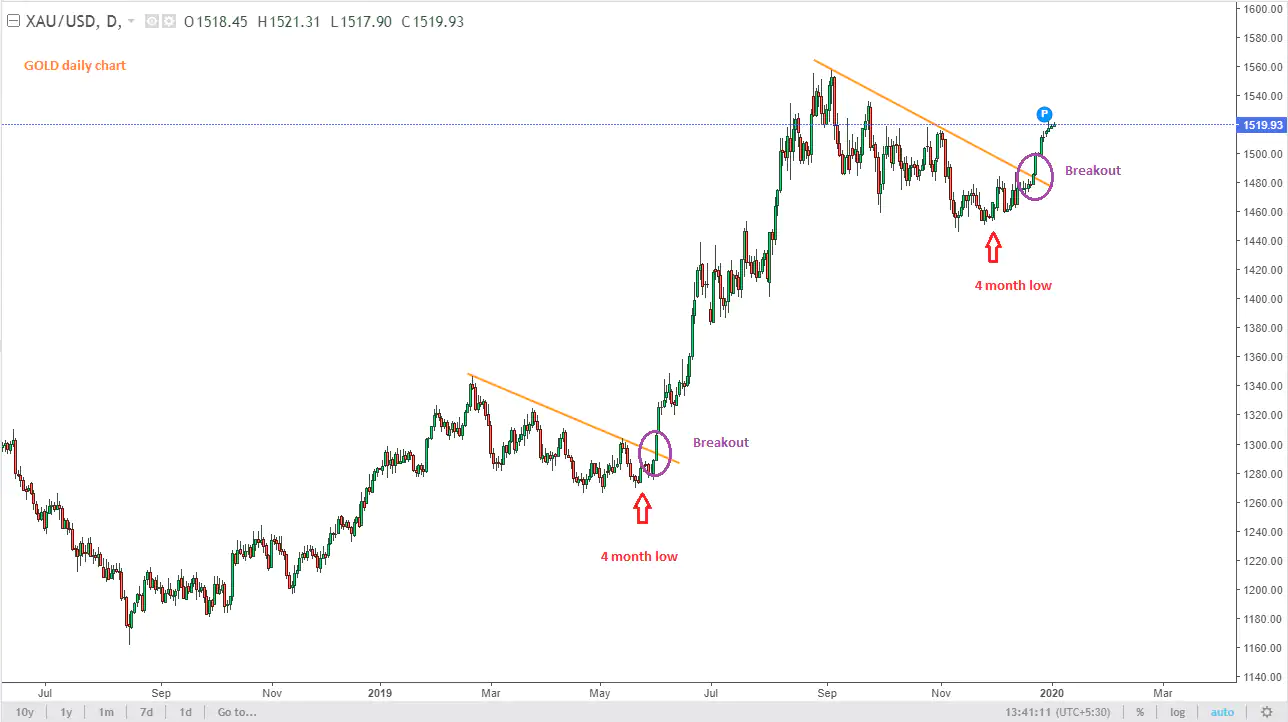- January 3, 2020
- Posted by: Amit Pabari
- Category: Market

After a bull grip in 2019, gold prices in the first two days of the New Year has turned steady. The yellow metal had given more than 18 percent return in 2019. Here are some of the factors that will influence gold prices in 2020:
Fundamental aspects:
Gold hording by major central banks
In the first six months of 2019, central banks worldwide had picked up 374.1 tonnes, helping push gold demand to a three-year high. China has added more than 100 tonnes of gold to its reserves since it resumed buying in December 18, 2019, reinforcing its standing as one of the major official accumulators of the precious metal. Along with China, Russia has also been adding substantial quantities of gold. RBI’s gold purchases too were at a decade-high level last year. According to the RBI data, the bank had $27,132 million worth gold reserves towards the end of December. In value terms, there has been a change of $5,907 million in 2019. This value growth accounts for the purchases made during the year, as well as, the price appreciation of existing gold holdings. The trend is expected to continue as after 2008 financial crisis, many countries became net buyers from net sellers of gold in a move to ‘de-dollarise’ their reserves.
Outperformance of major global stock markets
Despite muted growth, global equities were at peak. With equities remaining on a bull run like no other, it would be reasonable to say that commodities might not be top of the buy list for private investors. Since the stocks are already at peak, some consolidation can be expected which in turn shall lead to portfolio diversification towards safe heavens.
US elections
Gold prices have always been significantly volatile whenever US elections are about to take place. In this span of 28 years, there have been elections for seven times in US. And, post 2000, elections have taken place four times till now, out of which gold have surged three times on an average of 23 percent prior to US election. One of the reasons for rise in gold before US presidential election is that major funding of election is done via gold.
No recession, but muted growth
In 2019, all the major economies avoided recession. Germany came close to it, but growth expanded a modest 0.1% in the third quarter. For much of the world growth in the past year was very slow and much of the same can be expected in 2020. Therefore, demand for gold should remain elevated as the same remains a favoured asset class whenever there is a risk of recession or slowdown.
Technical Aspect:
As seen from the above chart, looks like history is repeating itself. The chart speaks a contradictory story to fundamental and as seen, there is a clear breakout in a similar pattern that gold made earlier in 2019. In the first breakout, gold had moved from $ 1,290 to $ 1,550 level, nearly 20 percent rise. After which the prices had fallen back towards $ 1,450 levels. However, from there on, gold started glittering and as of today, the rally is nearly about 5 percent. If the previous pattern is to be considered, the rally could continue to next 15 percent which gives a target of $ 1,740 levels. Also, technically, gold has a resistance near $ 1,570 levels which if broken can lead a further rise towards $ 1,720 region. Therefore, the trend for gold is biased on upside and stop-loss remains at $ 1,450 level.
Amit Pabari is managing director of CR Forex Advisors.
Leave a Reply
You must be logged in to post a comment.





